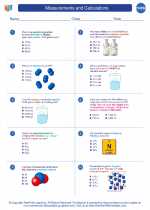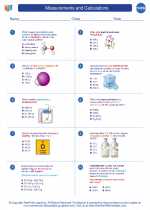Combined Gas Law
The combined gas law is a gas law that combines Charles's law, Boyle's law, and Gay-Lussac's law. It relates the pressure, volume, and temperature of a gas, and can be used to predict the behavior of a gas when one of these variables is changed.
Equation
The combined gas law is expressed by the equation:
P1V1 / T1 = P2V2 / T2
Where:
P1 = initial pressure
V1 = initial volume
T1 = initial temperature (in Kelvin)
P2 = final pressure
V2 = final volume
T2 = final temperature (in Kelvin)
Usage
The combined gas law can be used to calculate the final pressure, volume, or temperature of a gas when one of these variables is changed, while the other two variables remain constant. It is especially useful for solving problems involving changes in gas conditions.
Example
For example, if a gas has an initial pressure of 1 atm, an initial volume of 1 L, and an initial temperature of 273 K, and the pressure is changed to 2 atm while the volume is changed to 2 L, the combined gas law can be used to calculate the final temperature of the gas.
Using the combined gas law equation, we can solve for T2:
1 * 1 / 273 = 2 * 2 / T2
273 = 4 / T2
T2 = 4 / 273
T2 ≈ 0.0147 K
Study Guide
- Understand the individual gas laws: Charles's law, Boyle's law, and Gay-Lussac's law.
- Learn how to convert temperatures from Celsius to Kelvin, as the combined gas law requires temperatures to be in Kelvin.
- Practice using the combined gas law equation to solve for the unknown variable when the other variables are given.
- Understand the units of pressure (atm, mmHg, kPa) and volume (L) commonly used in gas law problems.
- Review and practice solving problems involving changes in gas conditions using the combined gas law.
By mastering the combined gas law, you will be able to understand and predict the behavior of gases under different conditions, and solve problems related to changes in gas properties.
.◂Chemistry Worksheets and Study Guides High School. Measurements and Calculations

 Worksheet/Answer key
Worksheet/Answer key
 Worksheet/Answer key
Worksheet/Answer key
